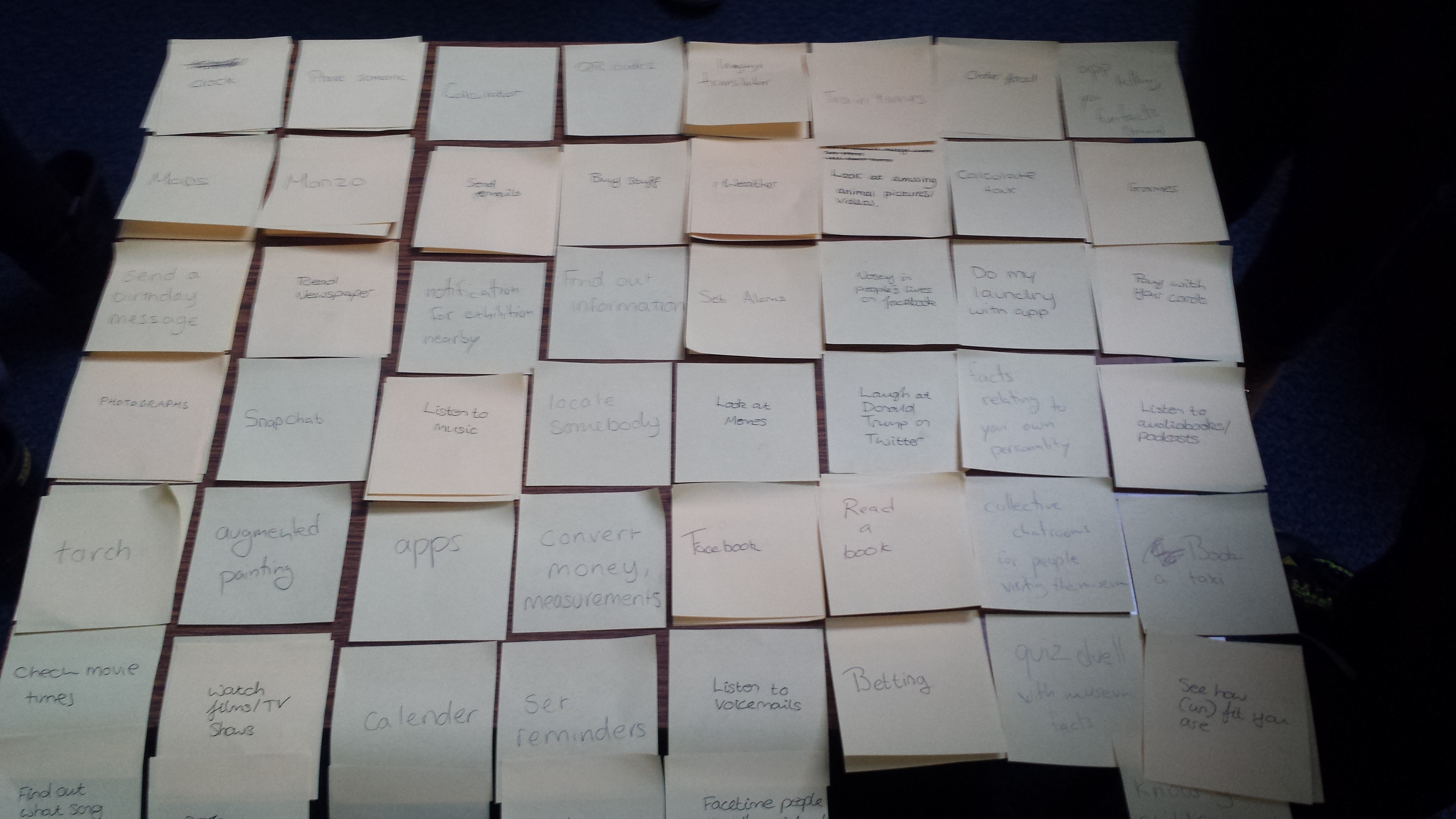Before we get into this week’s class, a brief caveat: I was not very well and although I was present in body my mind was certainly not firing on all cylinders, hence the somewhat brief entry for this session. This was somewhat irritating as I am very interested in how museums present their exhibits in a digital way, from both visitor interaction and archival aspects such as online catalogues.
One of the key points to come out of the discussion from the session was that with the ubiquitous nature of smart phones we all had the opportunity to seek knowledge for ourselves; of course whether one uses one smart phone for the acquisition of knowledge or to share Pictures on Facebook is another matter. This led on to the activity that we did which was to try and think of 50 things to do with your phone and preferably relate them back to the museum context. Initially I did not think our group could come up with even half of the required number but it was surprising how quickly we rattled them off once we got going. Unsurprisingly there were a few categories that turned up in every group such as social media, listening to music, reading the Internet, reading emails. Though some unusual options which I had not come across, especially particular programs such as Snapchat or Monzo which are not familiar with. Our class is made up of students from quite a wide age range but clustering at the younger end of the spectrum and I will admit to feeling a little bit old at certain points as the discussion turned to newer programs with which I was unfamiliar.

We did struggle a little to relate every single item to museum context but most of the ones we came up with at some relevance. Most of the bigger museums and many of the medium-sized institutions now have audiovisual media with which to accompany a visit, often in the form of a special app or tablet (sometimes there is a charge to rent these). These can range from simple audio tour as used Cheddar Gorge or the more involved and technologically advanced programs used Culloden battlefield where you can take a self-guided tour and use GPS to provide you with information about the specific part of the battlefield that you are on.
We were given a task to do where we had to come up with some kind of digital innovation further a museum with no budgetary constraints at all. Then we had to rein in our creativity to try and produce something slightly more realistic. Our group went all out with ideas of using tablets to interface with museum catalogues and then give visitors the ability to choose an artefact to print out on a 3-D printer installed in the exhibit. If for example the exhibition was on toys and games, a visitor can choose their favourite toy and create their own replica with which to interact and take home. However this would obviously costs a lot of money to set up and the ongoing budget would have to be reasonably high in order to provide the raw materials for the 3-D printing and to provide technical help when the printer inevitably breaks down.
I hope to revisit this topic when I’m not full of lurgy as it’s something that I find very interesting and ties into other areas of the syllabus that engage me; for example having the Internet at your fingertips promotes the kind of self-directed learning that I read about in the first week and has obvious influences on continuing education which is an area I would like to explore further for the reflective essay.
